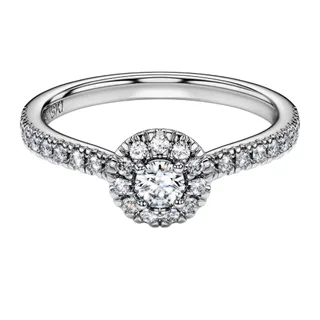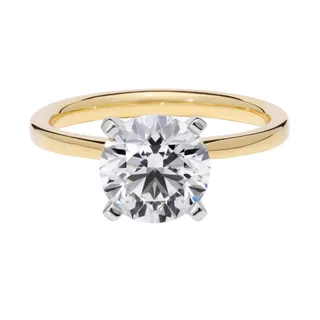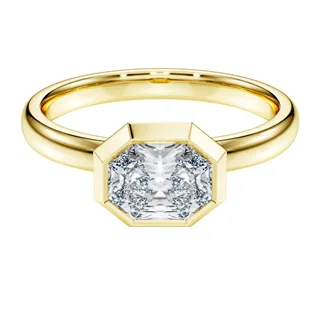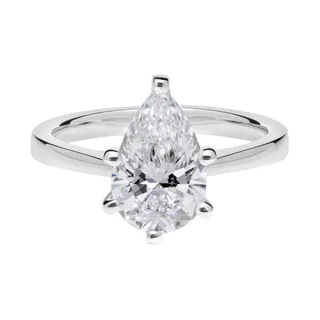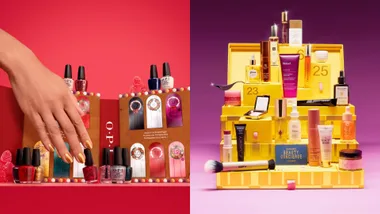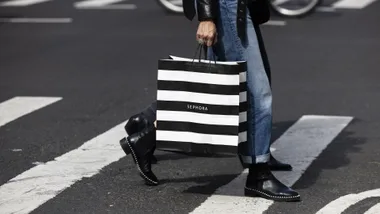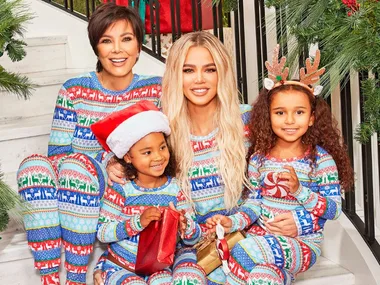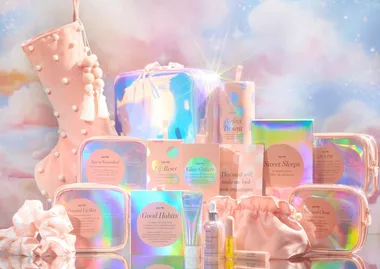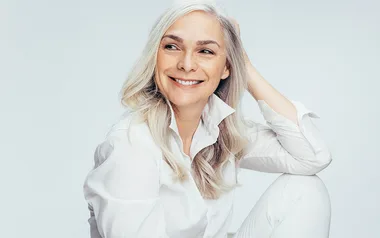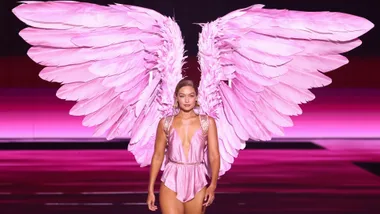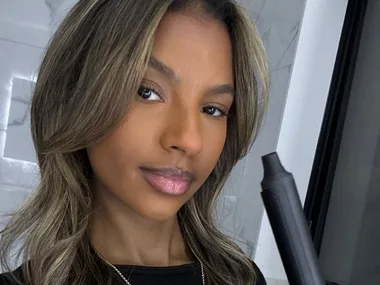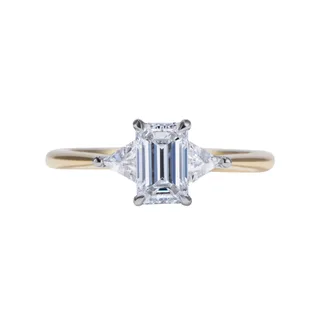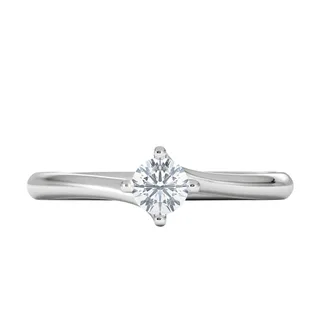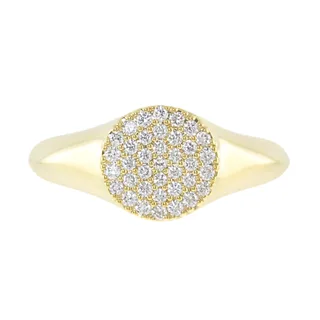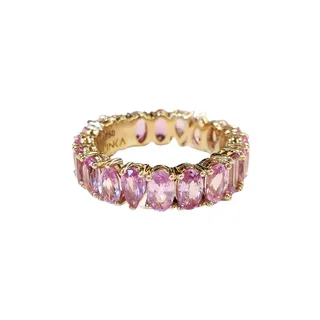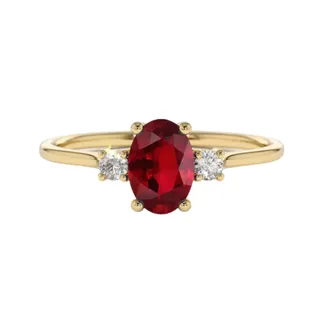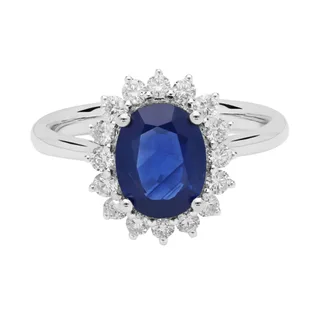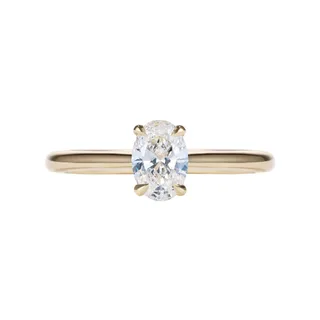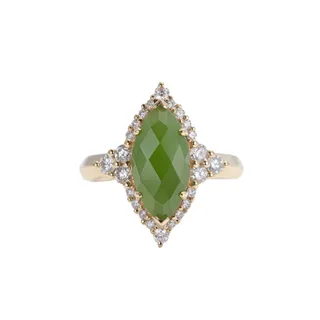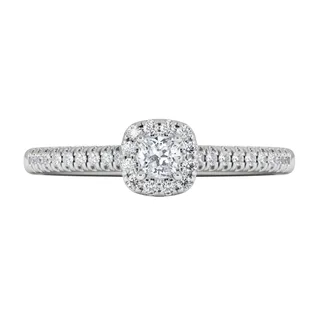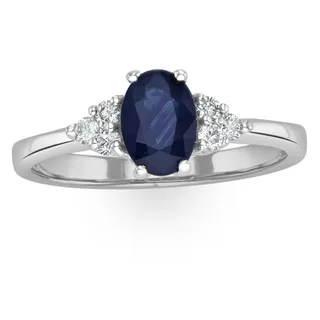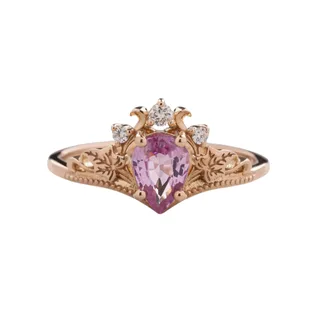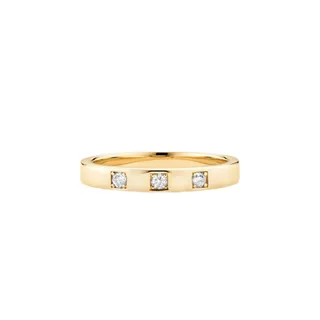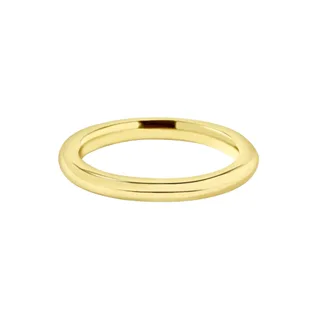Scrolling through Pinterest for your dream engagement ring or planning a proposal to sweep your partner off their feet? Choosing a symbol of forever – and deciding how much to spend – can feel equal parts exhilarating and overwhelming.
In 2025, relationships are more collaborative than ever, and the process of choosing an engagement ring is no exception. Our advice? Before you get down on one knee, ensure you and your partner are aligned on the ring’s style and budget, or break tradition and pick it together. Trust us, agreeing on these two things can save you from potential disappointment and stress.
When it comes to finding the one (the ring, of course), there’s a lot to consider – like whether to choose a natural or lab-grown diamond, which gemstones to steer clear of, and how much to spend. Thankfully, our guide to choosing the perfect engagement ring has you covered.
A guide to choosing an engagement ring in 2025
Should I choose a natural or lab-grown diamond?
Shop the edit: Lab-grown diamond engagement rings
If you’re looking for a diamond engagement ring, one of the first decisions you’ll face is choosing a natural or lab-grown stone. While both options have their merits, here’s what you need to know:
- Natural and lab-grown diamonds are visually and chemically identical: Natural and lab-grown diamonds are virtually indistinguishable to the naked eye and share the same chemical composition. A diamond’s cut, colour, size, and clarity (the 4Cs) have a greater visual impact than whether it’s lab-grown or natural. For example, a well-cut diamond will sparkle more, even if it’s smaller, and can make a smaller stone appear larger, proving that carat weight isn’t everything.
- Diamond grading: Starting in 2025, the Gemological Institute of America (GIA) will move away from the traditional 4C grading system for lab-created diamonds. Instead, they will categorise these diamonds using broader descriptors like “premium” and “standard.” Tom Moses, GIA’s executive vice president and chief laboratory and research officer, explains: “More than 95% of laboratory-grown diamonds entering the market fall into a very narrow range of color and clarity. Because of that, it is no longer relevant for GIA to describe man-made diamonds using the nomenclature created for the continuum of color and clarity of natural diamonds.”
- Affordability: Lab-grown diamonds cost 30-50% less than their natural counterparts, making them a budget-friendly option for those who want a larger or more intricate design. Their affordability allows for “a wide variety of custom cuts and shapes to play with, either as central stones or side stones, which gives the design a lot of options”, says Auckland jeweller Nick von K.
- Ethical considerations: Lab-grown diamonds reduce concerns about the environmental impact, supply chain transparency, and labour practices associated with mining natural diamonds. However, many reputable jewellers like Cushla Whiting and Alinka prioritise ethical sourcing if you desire a natural diamond.
- Perception and tradition: Some people view lab-grown diamonds as less traditional or “too perfect.” To avoid this perception, choose a size and style that feels authentic rather than opting for something flashy just because it fits your budget.
- Resale value: Natural diamonds hold their value better over time, making them an appealing choice for those who see an engagement ring as an investment. However, if your focus is on the sentiment and symbolism of the ring, resale value may not be a deciding factor.
Shop the edit: Natural diamond engagement rings
Do engagement rings have to feature diamonds?
While white diamonds are a classic choice, in 2025, coloured gemstones are having a moment, catering to the wearer’s personal aesthetic. According to The Pinterest Annual Wedding Trends Report for 2025, Gen Z couples are redefining wedding trends by embracing coloured stones. Searches on the online platform for pink, chocolate brown and champagne diamonds are on the rise, reflecting this shift.
Nick von K says people are moving away from large central diamonds, with stones like sapphires and tourmalines growing in popularity. “You can find every colour of the rainbow in these two stones, and every subtle shade in between, so customers can enjoy wearing their favourite colour and have something unique.”
Other popular gemstone alternatives to the classic white diamond engagement ring include:
- Colourless, grey, green or yellow moissanite
- Pink or orange morganite
- Blue, pink, green, purple or black sapphire
- Yellow citrine
- Red ruby
- Blue aquamarine
- Purple, pink, red, blue and black spinel
Shop the edit: Colourful gemstone engagement rings
Which gemstones should I avoid?
Choose a gemstone that ranks high on the Mohs hardness scale to ensure its durable enough for everyday wear – after all, an engagement ring should last a lifetime. Avoid stones prone to scratching or damage, such as emeralds, opals, peridot, malachite, and pearls.
Popular engagement ring cuts
It’s not just about the colour or type of stone – the cut of an engagement ring is equally as important. The cut should reflect your personal style and complement the proportions of your ring finger and hand. Popular engagement ring cuts include round brilliant, oval, emerald cut, pear, cushion and marquise.
Shop the edit: Popular gemstone cuts
How much should an engagement ring cost? Do I need to spend three months’ salary?
Thankfully, the three-month rule is a relic of the past. The amount you should spend on an engagement ring depends on shared expectations and what you can realistically afford. For many Kiwi couples, milestones like buying a first home, travelling the world, or starting a family take precedence over splurging on a ring. According to the Easy Weddings Australian Wedding Industry Report 2025, the average cost of an engagement ring is around $5,854 AUD.
Can I buy an engagement ring for under $5,000?
Absolutely. Many eye-catching engagement rings under $5,000 and $3,000 prove that affordability doesn’t mean you have to sacrifice style.
You could even consider a secondhand ring – online designer marketplaces like The RealReal and Farfetch Pre-owned offer pieces from luxury designers like Tiffany & Co., Harry Winston, and Bvlgari at a fraction of the original price.
Shop the edit: Engagement rings under $5,000
What about bespoke or ready-to-wear?
A bespoke ring allows you to create something unique, whether you’re modernising a family heirloom or designing an entirely new piece.
Nick Von K explains, “custom made rings are also very popular, and the benefit is we always chat to customers about how to fully personalise the ring for them, including such things as birthstones, initials, engravings and personal messages or symbols that encapsulate the romance of their relationship.”
Some jewellers offer preset designs with customisable options for those who prefer a more guided approach. For example, online retailer Blue Nile lets you select your diamond and ring setting to create a ring that’s uniquely yours.
However, if you’re working with a tighter timeline and budget, a wide array of beautiful ready-to-wear rings offers plenty of options beyond the classic solitaire.
Do I need to know the exact size of the engagement ring in advance?
Planning a surprise proposal? Don’t panic, as jewellers specialising in engagement rings have you covered. Many, like The Diamond Store, offer complimentary ring sizers to make the process stress-free. Another option is to order the ring slightly larger and resize it later. Most jewellers provide this service for free.
If you’re purchasing an engagement ring online, retailers like Blue Nile offer complimentary resizing for ‘build your own’ and diamond bands within the first year of purchasing. London jeweller The Diamond Store provides an innovative approach to ring sizing with its mobile app, allowing you to measure your finger virtually.
Does an engagement ring have to be a surprise?
While a surprise proposal can be wonderfully romantic, it’s important to consider the intended wearer’s taste. If they have particular preferences, enlisting a trusted friend to guide you in the right direction can be invaluable. If aesthetics are a priority, dropping subtle hints can help ensure the perfect choice.
On the other hand, choosing a ring together can be an intimate process that ensures the final piece is perfect. My opinion? If I’m going to wear a ring for the rest of my life, and a significant amount of money is being spent, it has to be something I’m completely obsessed with.
Auckland jeweller Cathy Pope offers a thoughtful compromise: go engagement ring shopping with your partner while keeping the experience a surprise.
“This way they can try on different styles, sizes and then decide which one sings out to them. We often have partners visit the shop together and it’s lovely to see the joy it brings both people”, Cathy explains.
Also, the shape of your fingers can significantly influence which styles actually suit you, as opposed to the ones you admire. While you might dream of a ring like Hailey Bieber’s oval-cut, yellow gold diamond or Zendaya’s five-carat cushion-cut ring by London-based Kiwi jeweller Jessica McCormack, you may find that these styles don’t suit your proportions (or are completely out of your budget).
Hot tip: Planning a surprise proposal? If your partner values presentation and will immediately want to post a selfie showing off the ring on Instagram, subtly arrange a manicure beforehand.
How do I care for my engagement ring?
Contrary to popular belief, don’t wear your engagement ring 24/7 or have it so tight it’s permanently stuck on your finger. Here’s how to keep your ring in pristine condition:
- Avoid wearing your engagement ring while doing housework, showering, sleeping, or working out.
- Get your ring professionally cleaned regularly, or use a mix of dish soap and warm water. While at-home ultrasonic jewellery cleaners are becoming mainstream, proceed with caution: some users report loosening stones or damage to softer gemstones.
- If you’re prone to losing things or work with your hands, consider a necklace with a carabiner clasp to keep your ring secure when it’s off your finger.
- Add your engagement ring to your insurance policy for peace of mind.
How do I choose a wedding band that complements my engagement ring?
Yes, the wedding band is another piece of jewellery to consider. Traditionally exchanged during your vows, it’s an unbroken circle symbolising eternal love. If you plan to add a wedding band to your ring stack, here’s how to ensure it complements your engagement ring, rather than overshadows it.
- Round brilliant diamonds: Choose a plain band for a timeless, understated look, or add sparkle with an eternity band.
- Oval, pear and marquise diamonds: A curved or contoured band beautifully accentuates the elongated silhouette of these shapes.
- Emerald-cut diamonds: A sleek, minimalist band enhances an emerald cut’s clean, geometric lines. Alternatively, a baguette diamond band continues the Art-Deco-inspired vibe.
- Cushion-cut Diamonds: A straight or slightly curved band works well, particularly if it features small diamonds or milgrain detailing to echo the vintage charm of the cushion cut.
Trends like stacking multiple bands or mixing metals on your ring finger are also gaining momentum, according to the Pinterest Annual Wedding Trends Report 2025. For endless wedding ring-stacking inspiration, check out contemporary jewellery brands Alinka and Mejuri.
Hot tip: If you’re drawn to the brilliance of an eternity band, consider a half-eternity style instead. It offers the same dazzling look while reducing wear and tear on the underside.
Shop the edit: Wedding bands
Ultimately, choosing an engagement ring is a deeply personal decision. What matters most is that the ring feels right to you and your partner. A significant marker of your love story, it symbolises your commitment to each other and your exciting future ahead.

